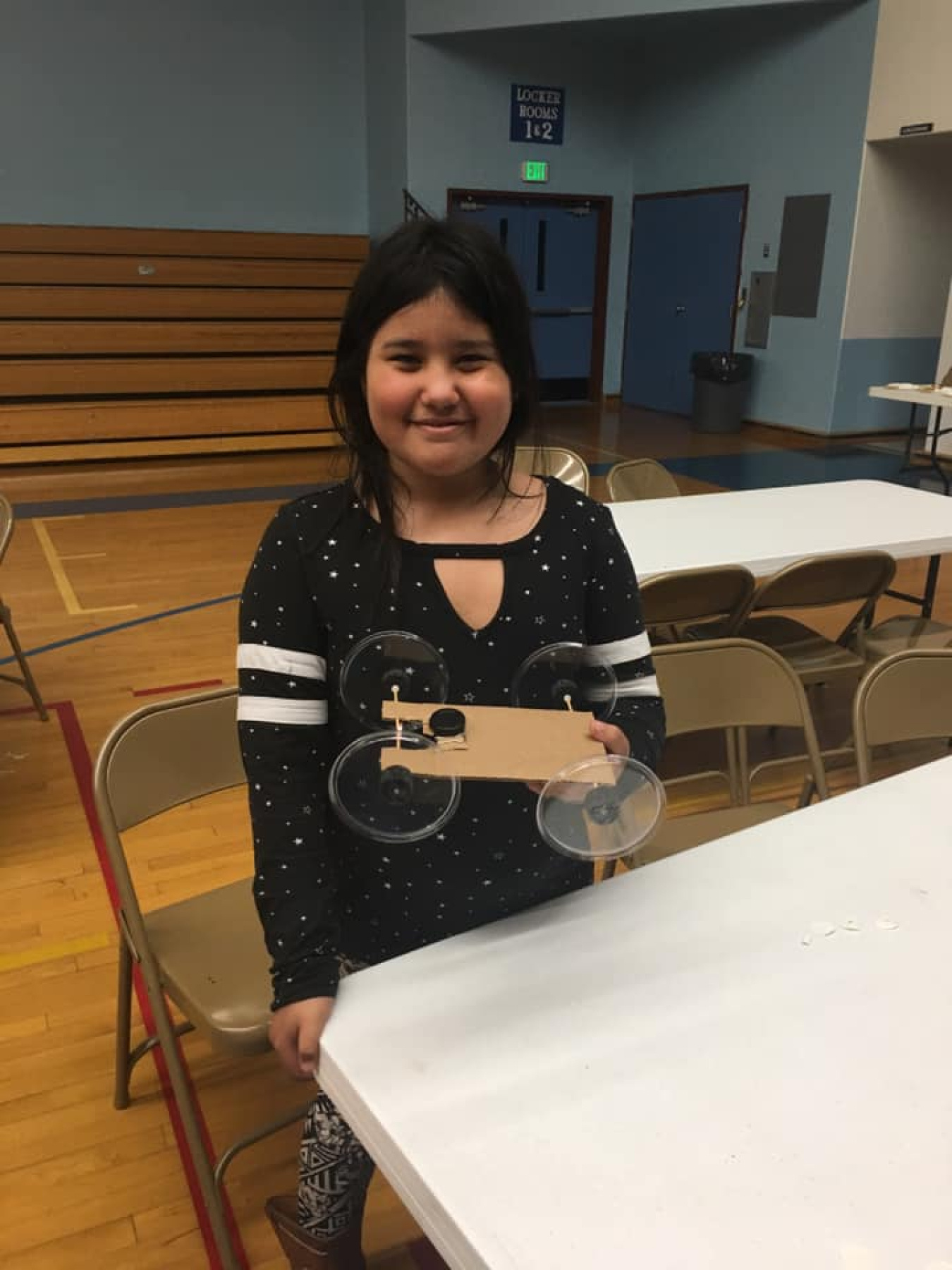INL’s K-12 STEM outreach team conducted three full days of outreach almost 600 miles from home.
July 18, 2019Editor's note: this article was originally posted on Idaho National Laboratory's website.
The state of Idaho is vast and often rural, making the prospect of statewide outreach an occasionally daunting one.
This didn’t stop INL’s K-12 STEM outreach team from conducting three full days of outreach almost 600 miles from home. On the contrary, working with underrepresented students – which includes not only first-generation students, female students and students of color, but also those who live in rural and remote locations – is a major cornerstone of INL’s STEM outreach goals.
“Leveraging INL partnerships and resources to grow STEM learning opportunities for all of Idaho’s students is one of the primary missions of INL’s STEM program,” said INL K-12 STEM Program Manager Jennifer Jackson. “Last year alone, more than 6,300 STEM jobs went unfilled in Idaho because there were not enough qualified candidates. Changing that statistic starts by reaching children when they are young and curious about the world in which they live, when the students are still in elementary and middle school. As the sixth largest private employer in the state, INL relies on experts in every STEM discipline to achieve its mission and is in a unique position to introduce Idaho students to STEM education and career pathways.”
This STEM road trip started in Orofino, population 3,000. Earlier in the year, a graduating senior in the area had reached out to INL’s STEM group with a request to organize a hands-on project for the school’s middle-school age students.
Armed with nothing but uncooked spaghetti and ten marshmallows, the students broke into small groups to build towers, as tall as possible and – more importantly – strong enough to withstand a simulated 6.0 earthquake. More than 120 seventh and eighth graders participated in the activity.
Next came Lapwai Elementary School, located on the Nez Perce Reservation.
At a well-attended family STEM night, students worked with their teachers and parents to build take-home activities that demonstrated STEM principals. For the younger students, it was a homemade harmonica demonstrating principles of vibration and sound waves. For the older students, cars with retractable badge-clip “motors” illustrated simple machine design, momentum and energy.

In Pierce, INL K-12 STEM staff was joined by INL Facilities and Site Services Deputy Director Ed Anderson and four University of Idaho student engineering ambassadors to engage with the 150 16- to 18-year-old students attending the Idaho Youth ChalleNGe Academy (IDYCA).
The Academy, a voluntary experience for at-risk youth, is a quasi-military residential high school, open to participants from all across the state.
The University of Idaho student ambassadors introduced the student cadets to the many different areas of engineering study available at the University of Idaho, including computer engineering, mechanical engineering, materials engineering and more. Then they assisted the students as they built their own pasta-and-marshmallow towers.
“This is basically the same principles that you’ll see in an undergraduate mechanical engineering class,” said senior mechanical engineering student Bryce Graveline. “You may not understand the math at first, but as you test your design and move forward, that will come.”
The underlying message was that it’s never too late – and STEM is never too hard – to pursue a fulfilling career in science, technology, engineering or math if a student has a passion for it.
“I really struggled with math in college,” said student ambassador and graduating mechanical engineering major Nick Sentieri. “It took me a lot more time and effort than it did before. But I was passionate about it. And I firmly believe that if I can do it, any single person in this room can do it, too.”
Anderson also spoke with students about some of the career opportunities that are available at INL, both in STEM fields and in equally vital support roles such as technician work, construction work and other facility support jobs.
“The cadets really seemed to enjoy the presentations and activities,” said IDYCA math teacher Mike Brocke, who hosted the event. “It is cool to watch them get excited about science and math!”
Finally, the team spent a day at the University of Idaho’s Engineering Expo, a yearly event to highlight the projects of graduation engineering students. Anderson – and other INL engineers – were asked to serve as judges at the expo.
With so many STEM projects in one place, it is also a popular field trip for local elementary school students, over 1,000 of whom attended to learn about engineering subjects.
At the INL table, students explored electricity with a Van de Graff generator. A hand crank generator, which could illuminate either a modern LED bulb or an incandescent bulb, illustrated the comparative energy efficiency of an LED bulb.
Over three full days of activities, INL employees interfaced with nearly 2,000 local students, from kindergartners to graduating high school students.

